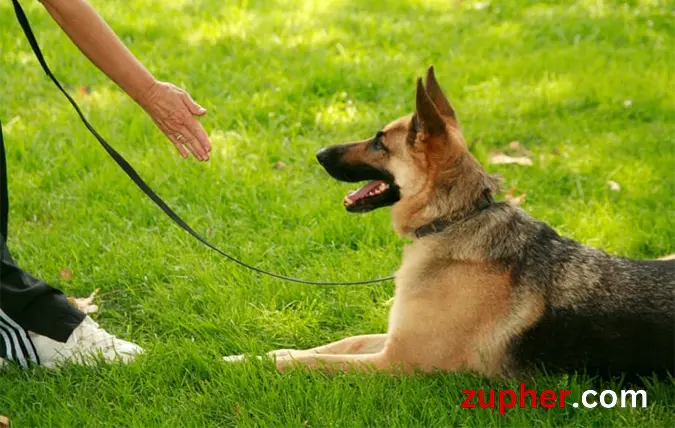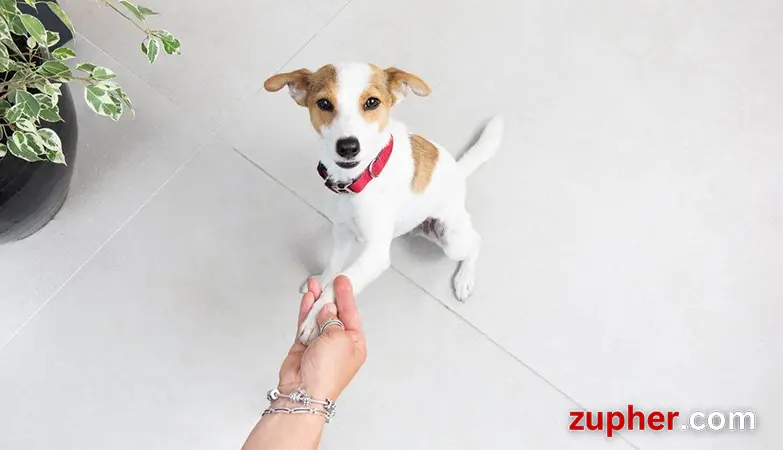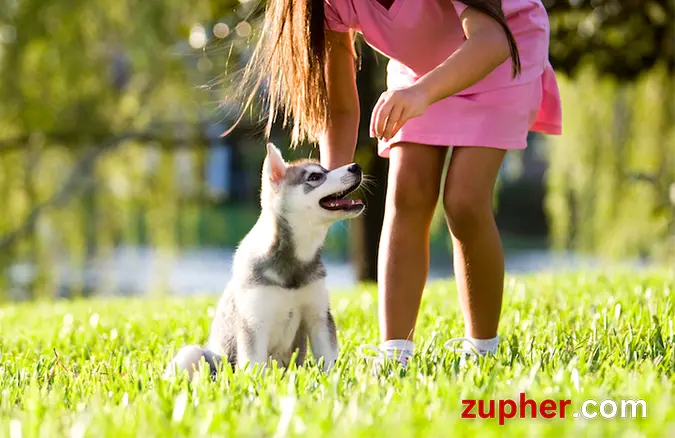How Do I Teach My Dog Basic Obedience Commands?

Introduction
A. Importance of basic obedience commands for dogs:
Basic obedience commands are like a secret language between you and your furry friend, helping them understand what you want them to do. It’s like teaching them manners so they can be well-behaved members of your family.
B. Benefits of training your dog in obedience:
Training your dog in obedience can make your life easier and your bond stronger. Imagine a dog that listens when you call their name or sits when you ask. It also keeps them safe because they’ll know how to behave in different situations.
C. Overview of basic obedience commands:
These are the ABCs of dog training. Basic commands such as sit, stay, come, and heel form the foundation of good behavior. Learning these commands can make your dog a joy to be around and give them the skills they need to navigate the world confidently.

Understanding the Basics
A. Importance of consistency in training:
Consistency entails repeating the same action consistently. When you train your dog, you need to be consistent in your commands and expectations. This helps your dog understand what you want from them and makes learning easier for them.
B. Understanding your dog’s breed and temperament:
Every dog is unique, just like people. Understanding your dog’s breed and temperament means knowing what kind of behaviors are natural for them. For example, some breeds are more energetic and may need more exercise, while others are more laid-back and may be easier to train.
C. Identifying effective training methods:
There are many different ways to train a dog, but not all methods work for every dog. It’s important to find a training method that works best for your dog’s personality and learning style. Some dogs respond well to positive reinforcement, like treats or praise, while others may need a firmer approach. Experimenting with different methods can help you find what works best for your furry friend.

Setting the Stage for Training
A. Establishing a positive relationship with your dog:
Building a positive relationship with your dog is like laying a strong foundation. Spend quality time together, show them love and care, and be patient. This helps them trust you and makes training more effective.
B. Creating a conducive training environment:
Just like studying is easier in a quiet room, training your dog works best in a calm and distraction-free environment. Find a quiet space in your home or a peaceful spot in the park where you can focus on teaching your furry friend without interruptions.
C. Gathering necessary training supplies:
Imagine trying to cook without ingredients – it wouldn’t work! Similarly, you need the right tools to train your dog effectively. Basic supplies like treats, a leash, and a collar or harness are essential. Depending on your training method, you might also need clickers or training mats. Gather these items before you start your training sessions so you’re prepared and can focus on teaching your dog.

Teaching Specific Commands
A. Sit command
- Step-by-step training process: To teach your dog to sit, hold a treat above their nose, then slowly move it back. As their head lifts, their bottom should naturally lower. Say “sit” as they do. Repeat until they understand.
- Common challenges and troubleshooting tips: Some dogs may not sit right away or might get distracted. Be patient and use enticing treats. If they don’t sit, gently guide their bottom down while saying the command.
B. Stay command
- Techniques for teaching your dog to stay: Start with short durations and gradually increase. Use a hand signal alongside the verbal command. Reward your dog for remaining in position.
- Reinforcing the stay command in different situations: Practice “stay” in various environments, gradually adding distractions. Reward your dog for maintaining the stay, even if it’s just for a few seconds at first.
C. Come command
- Training methods for a reliable recall: Start in a quiet area. Say “come” while gently pulling on the leash. Reward your dog when they come to you. Gradually increase the distance and distractions.
- Incorporating distractions into training sessions: Practice the recall command around distractions like other dogs or toys. Start with mild distractions and gradually increase difficulty as your dog improves.
D. Down command
- Training your dog to lie down on command: Hold a treat close to the ground and slowly move it forward. As your dog tracks the treat, their body will naturally lower. Say “down” as they do. Repeat until they understand.
- Addressing common obstacles in teaching the down command: Some dogs may resist lying down or get confused. Use high-value treats and be patient. If needed, gently guide their body into a down position while giving the command.

Positive Reinforcement and Reward Systems
A. Importance of positive reinforcement in dog training:
Positive reinforcement means giving your dog something they like or enjoy when they do something you want them to do. It’s like saying “Good job!” Alternatively, offer them a treat when they follow a command. This makes your dog more likely to repeat the behavior in the future.
B. Selecting appropriate rewards for your dog:
Just like people have different preferences, dogs have different things they find rewarding. For some, it might be a tasty treat, while for others, it could be a favorite toy or a belly rub. Pay attention to what motivates your dog and use that as a reward during training.
C. Establishing a consistent reward system:
Consistency is key in dog training. Once you’ve identified what rewards your dog likes, use them consistently every time they obey a command correctly. This helps your dog understand what behavior you want from them and reinforces their learning. Remember to praise and reward your dog promptly after they performs the desired behavior to reinforce the connection between the action and the reward.
Overcoming Challenges
A. Dealing with setbacks and frustrations:
Sometimes, training your dog can be tough, and you might feel frustrated when things don’t go as planned. Remember to stay patient and calm. Take breaks when needed, and don’t be too hard on yourself or your dog. Celebrate little successes and continue progressing.
B. Understanding your dog’s limitations and adjusting expectations:
Each dog learns at its speed, similar to humans. If your dog is struggling with a command, it might be because they need more time or a different approach. Be realistic about what your dog can achieve and adjust your expectations accordingly. Celebrate progress, no matter how small.
C. Seeking professional help when needed:
If you’re feeling stuck or overwhelmed, don’t hesitate to seek help from a professional dog trainer or behaviorist. They have the knowledge and experience to assess your dog’s needs and provide personalized guidance. Keep in mind, that seeking assistance demonstrates strength, not weakness. It shows that you’re committed to helping your dog succeed.
Incorporating Obedience Training into Daily Life
A. Integrating obedience commands into daily routines:
Think of teaching your dog obedience commands like teaching them good habits. Incorporate commands into everyday activities, like asking your dog to sit before feeding them or asking them to wait before going outside. This helps reinforce their training and makes it a natural part of their day.
B. Using obedience training for behavior management:
Obedience training isn’t just about teaching commands; it’s also about shaping your dog’s behavior. For example, teaching your dog to “stay” can prevent them from running out the door or jumping on guests. By using obedience commands consistently, you can manage your dog’s behavior in various situations.
C. Maintaining consistency and reinforcing learned commands:
Consistency is key to successful obedience training. Once your dog has learned a command, continue practicing it regularly to reinforce their learning. Use positive reinforcement, like treats or praise, to reward your dog when they obey commands correctly. This helps keep their skills sharp and strengthens the bond between you and your furry friend.
Conclusion
A. Recap of key points in teaching basic obedience commands:
Remember, teaching your dog basic obedience commands is all about consistency, positive reinforcement, and understanding your furry friend’s needs. Start with simple commands like sit and stay, and gradually build on their skills.
B. Encouragement for continued training and reinforcement:
Teaching your dog is a continual effort demanding patience and dedication. Celebrate your successes along the way and don’t get discouraged by setbacks. With time and practice, you and your dog will become a well-trained team.
C. The importance of patience and persistence in dog training:
Patience and persistence are essential qualities in dog training. Just like Rome, a well-trained dog isn’t built overnight. Be patient with your dog as they learn and remember that every small step forward is progress. Keep practicing, stay consistent, and enjoy the journey of training your furry companion.
People also ask
How do I teach my dog to obey commands?
Start with simple commands like sit and stay, use positive reinforcement, and be patient.
What are the 7 basic dog commands?
Sit, stay, come, down, heel, leave it, and off.
What are the top 5 basic dog commands?
Sit, stay, come, down, and heel.
Which command is the most challenging to teach a dog?
The “stay” command can be challenging for some dogs.
How can I make my stubborn dog listen?
Use high-value treats, be patient, and stay consistent with training.
What is the best order to train a dog?
Begin with fundamental commands such as sit and stay before progressing to more advanced ones.



